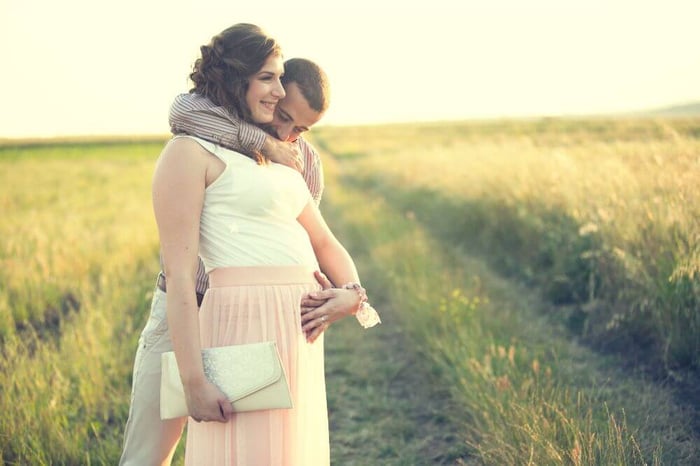Should Newborn Daytime Naps Be In The Dark? A tired mommy who doesn’t know how to make a perfect environment for little one to sleep?
Knowing that they’ve spent 9 months in a completely dark environment, it’s necessary to expose them to light as well. That’s why a blend of light and dark is necessary for the first 8-12 weeks.
They also have the right to know about light, right?
But light is also a source of distraction. To develop their circadian rhythms, you have to make them aware of both dark and light.
Confused parent?
Well, it’s not as complex as it sounds. In this blog, we will explore how darkness influences baby naptime. Let’s explore how you can get a perfect blend of light and dark for your newborn’s day naps.
Understanding Newborn Sleep

Newborns sleep A LOT. What other thing do they have to do besides sleeping?
Newborns sleep more than half of the day, somewhere between 16-18 hours a day, and their sleep patterns are markedly different from those of adults.
And being a new parent, it may be difficult for you to understand their sleep patterns. Somedays, they tokk 3-hours nap in one go while other days it’s just one hour and they’re up.
It often gets overwhelming, and that’s why it’s necessary to understand their sleep patterns.
Here are a few things you should know about the sleep of newborns:
- Normally, newborns spend 50% of their sleep in REM (Rapid Eye Movement), which is essential for their brain development.
- Their sleep patterns are irregular, alternating between short naps that might last between 30 minutes to three hours and intervals of awake.
- During the first few weeks, newborns don’t have a well-established circadian rhythm, which means they may not differentiate between day and light.
- Due to their frequent need for diaper changes and strict feeding regimens, newborns typically wake up every two to three hours.
- They progressively consolidate sleep and acquire more definite patterns as they grow, causing their sleep periods to lengthen.
- To help the baby's growing circadian rhythms align with the natural light-dark cycle, you can facilitate this transition by establishing an atmosphere that cues the difference between day and night.
But there are so many opinions regarding whether you should keep your newborn in light for a day or keep their surroundings dark.
To understand it better, you must know the role of light in a newborn’s sleep.
Role of Light in Sleep

Getting enough light during the day and dark during the night can help promote healthy sleep habits in children at a young age.
You might have heard that staying in the dark triggers sleep hormones and melatonin. However, we need both dark and light to set the circadian rhythm of newborns. How light and dark naturally flow into one another affects these cycles.
Adults benefit from daytime light exposure, which helps maintain alertness and wakefulness. Darkness causes the body to release melatonin, which induces sleep.
Exposure to light helps to adjust the internal clocks. So, a balance is a MUST.
Natural light exposure during the day might tell a newborn when to wake up and get moving. On the other hand, keeping your surroundings dark at night and lowering the lights in the evening will help your body recognize when it is time to go to sleep. This distinction is essential for babies to mature and begin creating their own circadian rhythms.
Should Newborn Sleep in the Dark?

There are many opinions on whether you should nap your newborn in the dark or light during the daytime.
For newborns, we have to keep the days light and nights dark. You may ask why, and here it is: they have underdeveloped internal clocks—pineal glands—and don’t release sleep hormones.
According to some experts, exposing babies to light during day naps aids in their ability to distinguish between day and night, which may improve their quality of sleep at night. However, once they start producing sleep hormones, typically after 8-12 weeks, they become more aware of the world around them.
And when that happens, they need a darkroom to get a good sleep.
When Should Newborn’s Daynaps Be In the Dark?

If your child is not experiencing day/night confusion (generally indicated by how well they sleep), you can begin naps in a dark setting whenever you wish. If evenings deteriorate, you can attempt naps in the light again until nights return to normal (just something to look into if you have a new kid!)
Because they are not particularly driven to sleep, anything they see will distract them. This means they won't fall asleep as readily!
The dark room (like a cave) is so monotonous that their only alternative is to sleep! Win-win.
Besides this, when it’s dark, the body’s natural clock mimics it as night, and the Pineal glands are turned ON. They release melatonin into the blood, which makes newborns feel drowsy and fall asleep.
More darkness - More melatonin - Better quality sleep.
You don't have to worry that your child will only sleep in a dark area for naps. It's simply the best sleep setting; they can still sleep in a well-lit environment, but it won't be as good a sleep!
You don't have to train them to sleep in well-lit regions either. Simply condition them to sleep, and they will become flexible! The clothes should be comfortable for newborn. You can complete your baby’s wardrobe with our swaddles, hair accessories, socks, and other essentials.
$7.00 CAD
Glitter Kitties Hair Clips | Hatley The perfect accessory for the young cat lover in your life. These playful and shimmery cat hair clips are sure to bring a smile to her face. FEATURES Glitter bow with cat ear design… read moreGlitter Kitties Hair Clips | Hatley

How to Make a Dark Room For Daynaps

As the research shows, dark rooms are good for better-quality sleep, and this applies to your newborn, too. For their well-being, a good 3-4 naps of 3 hours would be best for the first few months (sounds like a dream, doesn’t it?). You can make your newborn’s room dark with a few settings.
Ready to transform the nursery into a slumber paradise? With a few simple actions, you can remove any distracting or sleep-disturbing light for your infant.
Blinds and blackout shades
High-coverage shades and/or blinds can effectively block out light when closed. Ensure they fit properly and do not create gaps around the window borders.
Cool temperature
Babies tend to sleep better in cool rooms. While there is no "best" temperature, most newborns are comfortable between 68 and 72 degrees Fahrenheit. To guarantee that the room is ideal, use a monitor with a temperature and humidity sensor or a room thermometer.
White noise
While not directly related to darkness, white noise devices can significantly impact the establishment of a tranquil sleep environment. Look for a machine with extensive control choices and different sound settings.
Consistency
A successful nap or bedtime relies heavily on routines. Make a modest list of repeatable and relaxing things to do before falling asleep. Changing into sleepwear, reading a book, and listening to music are all excellent ways to prepare your baby for nap time.
What If My Baby Naps Too Much?

The majority of parents are unlikely to have this issue. (Babies and toddlers require up to three hours of daytime sleep over an extended period!) No rules state you can't open the blinds or curtains.
After your baby has napped for at least an hour, you could let some light in so she can wake up naturally during her next sleep cycle. There is such a thing as "napping too much" in that it can "rob" one's night's sleep, although this is not an issue for most people. Most individuals want to know how to take longer naps in the first place!
Conclusion
Here we come to an end! A well-rested baby is a happy baby, and that’s what we want. For the first few months, introduce your newborn to light so they can distinguish between day and night. Once their body’s internal clock is on autopilot, make sure you give day naps in the dark for a well-rested sleep.
Get a perfect balance for your newborn from these practical tips.
Is your baby getting enough sleep? Let us know which technique works for you and your munchkin.
FAQs
Should a newborn nap in the dark?
A dark room helps newborns fall asleep easily and drift into restful sleep. Darkness signals to their body that it’s night, and their developing pineal glands release melatonin, which helps them sleep well. By keeping your room dark, you can help your newborn fall asleep for a long time.
Should I let my newborn nap in the evening?
Baby’s napping too close to bedtime is not a big concern. Ensure there is a one-and-a-half-hour difference between naptime and bedtime so they can get Zzz's for her nighttime slumber.
Do daytime naps affect the night-time sleep of newborns?
Around three or four months old, your baby should begin to show daytime sleep patterns on which you can base a regimen. When this occurs, some babies may snooze excessively during the day, affecting their nocturnal sleep.
How long should a newborn’s daytime naps last?
It is advisable to keep daytime naps to 2-3 hours and wake your child up to eat when she nears the three-hour mark. This will help your newborn distinguish between day and night sleep and build a circadian rhythm.








































